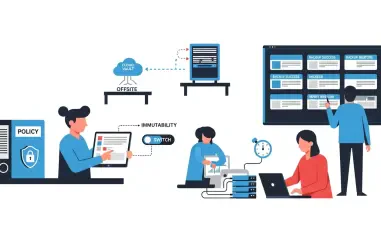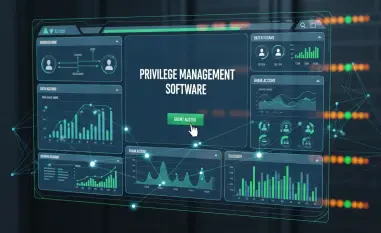In today’s fast-paced and ever-evolving business landscape, where organizations are continually exposed to myriad risks, the pursuit of effective risk management strategies has become paramount. The ISO 31000 standard has emerged as a vital framework that not only addresses conventional risk mitigation procedures but also unlocks significant business value. By integrating ISO 31000 into security projects, companies can realize substantial benefits beyond mere protection, aligning risk management with broader organizational goals and objectives. This transformative approach enables businesses to harness security initiatives as strategic assets that contribute positively to value creation and business growth rather than simply being seen as a necessary cost for defense.
Evolving Security Projects Beyond Traditional Risk Management
Security projects have historically been viewed through a narrow lens, focused primarily on addressing specific threats and vulnerabilities. They often operated in silos, detached from broader business strategies, and tended to prioritize immediate risk reduction over long-term value creation. The limitations of this approach are becoming increasingly clear as organizations face more sophisticated threats and the need for resilience and adaptability grows. The introduction of the ISO 31000 framework represents a significant shift in how security projects are conceptualized and executed. Instead of viewing these projects as stand-alone efforts, ISO 31000 promotes risk management as an integral part of organizational processes, embedded in decision-making at all levels. This holistic integration ensures that security projects evolve from being reactive solutions to proactive strategies that not only protect but also drive business value.
Through the application of the ISO 31000 standard, security projects can be transformed to align with organizational objectives, promoting a strategic vision where value protection and creation go hand in hand. Risk management under ISO 31000 becomes a continuous process, factoring in internal and external factors that influence the organization’s ability to achieve its goals. This approach necessitates a keen understanding of potential risks and opportunities, empowering organizations to allocate resources effectively and prioritize initiatives that deliver the most significant benefits. By adopting a long-term perspective on security projects, aligned with ISO 31000, businesses can enhance their operational efficiency, resilience, and stakeholder confidence. This paradigm shift not only enables organizations to protect their assets but also exploits risk management as a catalyst for innovation and competitive advantage.
Maximizing Business Resilience and Trust
Business resilience, an organization’s ability to absorb, adapt, and recover from disruptions, is vital in the current environment characterized by increasingly complex and interdependent systems. Integrating ISO 31000 into security projects enhances resilience by ensuring that potential threats and risks are identified, assessed, and managed systematically. Organizations that leverage ISO 31000 are better positioned to withstand disruptions, be they cyber-attacks or physical breaches, because their risk management strategies are comprehensive, well-coordinated, and aligned with overall business strategies. This alignment fosters an environment where preventive measures, swift responses, and adaptive strategies are part of the organizational culture, thereby reducing the impact of adverse events and accelerating the recovery process.
Stakeholder confidence is intrinsically linked to how effectively an organization manages risk. A structured approach to risk management, such as that provided by ISO 31000, demonstrates an organization’s commitment to safeguarding its interests and those of its stakeholders. Trust is built when clients, investors, and regulatory bodies see evidence of robust risk management strategies. This trust is critical, as it influences investor decisions, customer loyalty, and regulatory compliance. By showcasing their adherence to ISO 31000, organizations can communicate their dedication to high standards of risk management, thereby enhancing their reputation and strengthening stakeholder relationships. As a result, businesses that integrate ISO 31000 into their security projects not only protect and create value but also safeguard and enhance their reputation and stakeholder trust.
Leveraging Security Initiatives for Operational Excellence
Operational efficiency is paramount for organizations aiming to maintain competitive advantage and sustain growth in an increasingly challenging market environment. Rather than being a drain on resources, security projects executed under ISO 31000 can optimize operational efficiency through proactive risk management. By forecasting and mitigating risks before they materialize, organizations minimize the need for costly, reactive responses to threats. This foresight leads to more streamlined operations, where resources are efficiently allocated, and risks are managed with precision and foresightedness. The integration of risk management into everyday operations under ISO 31000 ensures that processes are optimized and aligned with strategic objectives, fostering a culture of continuous improvement and agility.
Additionally, an environment where risks are anticipated and managed effectively promotes a culture of innovation. When organizations are confident in their risk management strategies, they are more likely to take calculated risks in exploring new technologies, processes, and markets. A secure environment under ISO 31000 ensures that these explorations occur with less uncertainty, allowing organizations to innovate without compromising stability. This capacity for innovation, underpinned by robust risk management, becomes a cornerstone of competitive advantage and sustainable growth. By aligning security projects with ISO 31000, organizations achieve not only operational efficiency but also leverage these projects as enablers of innovation and transformation, unlocking new avenues for success and value creation.
Strategic Integration for Enhanced Compliance and Competitive Edge
In an era where regulatory requirements are becoming increasingly stringent across industries, compliance has emerged as a key concern for organizations worldwide. Adherence to recognized standards such as ISO 31000 offers a structured approach to meet these compliance demands, ensuring that organizations remain vigilant and responsive to the evolving regulatory environment. By embedding ISO 31000 into security projects, organizations demonstrate a proactive stance towards compliance, showcasing their commitment to best practices in risk management. This not only reassures stakeholders but also places organizations in a better position to face audits and regulatory reviews, thereby minimizing potential legal and financial repercussions. ISO 31000 provides a comprehensive framework that seamlessly aligns with compliance requirements, offering a buffer against the complexities of regulatory changes.
Beyond compliance, adhering to ISO 31000 can also serve as a competitive differentiator in the marketplace. Organizations that demonstrate strong risk management processes are often perceived as more reliable and trustworthy by customers, partners, and investors. The confidence this inspires can translate into increased business opportunities and market share. ISO 31000 provides a benchmark for excellence in risk management, positioning organizations as leaders in their field. This competitive edge is further enhanced by the adaptability and resilience that effective risk management fosters, allowing organizations to navigate changes and challenges with agility and confidence. By strategically integrating ISO 31000 into their security projects, organizations not only ensure compliance but also strengthen their market position and secure a sustainable advantage over competitors.
Transformative Approach for Security as a Value Driver
The adoption of ISO 31000 heralds a transformative approach to security projects, positioning them as essential catalysts for value creation and protection. Rather than being perceived merely as a cost center, effective security management under ISO 31000 shifts the focus to view security initiatives as strategic drivers that support core business objectives. This shift advocates for a comprehensive framework that simultaneously addresses the dual goals of value protection and value creation, aligning security projects with the broader mission and vision of the organization. Through this lens, security becomes a dynamic and adaptable mechanism that contributes to organizational success by safeguarding assets, ensuring business continuity, and enabling innovation. Under ISO 31000, security projects are not isolated attempts to fend off threats; they are integral components of a holistic approach to corporate strategy, designed to deliver measurable returns on investment by enhancing business value. This paradigm not only ensures robust protection against threats but also opens new pathways for achieving competitive transformation.
By strategically implementing ISO 31000, organizations are empowered to create a unified risk management culture that transcends departmental boundaries. Security projects are viewed as collective endeavors, requiring collaboration across different functions to achieve optimal outcomes. This integrated approach encourages a culture of shared responsibility, where risk awareness and mitigation are embedded within organizational processes. Consequently, organizations can better adapt to the complexities of an ever-changing risk landscape, positioning themselves as leaders in agile and responsive risk management. Security projects aligned with ISO 31000 become drivers of continuous improvement, providing the enterprise with the resilience and flexibility needed to thrive in an uncertain world. This transformative perspective not only reframes security as an enabler of business success but also shapes a future where value creation and protection are seamlessly intertwined.
Advanced Strategies for Sustainable Security Practices
The integration of ISO 31000 into security projects emphasizes the importance of continuous adaptation and improvement to sustain effective risk management practices. As security threats evolve over time, organizations must remain agile and responsive to emerging risks. ISO 31000 facilitates this by promoting a cyclical review process where risk management strategies are regularly assessed and refined. This ensures that security measures remain relevant and effective, enabling organizations to stay ahead of potential threats and vulnerabilities. By incorporating adaptive security controls and leveraging data-driven decision-making, organizations can anticipate changes in the risk landscape and adjust their strategies accordingly, ensuring sustained resilience and proactive risk management.
ISO 31000 also advocates for a data-driven approach in security projects, where evidence-based insights are used to inform decisions and strategies. By harnessing data analytics and predictive modeling, organizations can identify trends, assess risk probabilities, and prioritize risk management efforts efficiently. This data-centric approach not only enhances the accuracy of risk assessments but also provides a solid foundation for strategic planning and resource allocation. Furthermore, it enables organizations to make informed decisions that align with their overarching business objectives, optimizing the balance between risk management and value creation. Ultimately, embracing ISO 31000 equips organizations with advanced strategies that promote sustainable security practices, ensuring that they remain resilient and competitive in a rapidly changing environment.
Reimagining Security Initiatives for Future Success
In the dynamic and constantly changing business world of today, organizations find themselves facing an array of risks on a daily basis. This has made effective risk management an essential part of business strategy. The ISO 31000 standard stands out as a critical framework in this realm, not just tackling traditional risk mitigation practices but also opening doors to considerable business value. Implementing ISO 31000 in security initiatives, companies can reap benefits that go far beyond mere safeguarding assets; these strategies align risk management with an organization’s broader ambitions and objectives. By adopting this transformative method, businesses can leverage security efforts as strategic resources contributing to value creation and business expansion, rather than viewing them solely as an obligatory expense for protection.
This approach shifts the perception of security projects, seeing them as integral elements of strategic planning rather than costs to be minimized. Businesses embracing ISO 31000 can turn potential threats into opportunities for growth, making risk management an active contributor to success. This holistic view, where risk management supports innovation and growth, emphasizes the strategic importance of integrating security measures into the fabric of overall business planning, positioning companies to thrive while effectively managing evolving threats.













